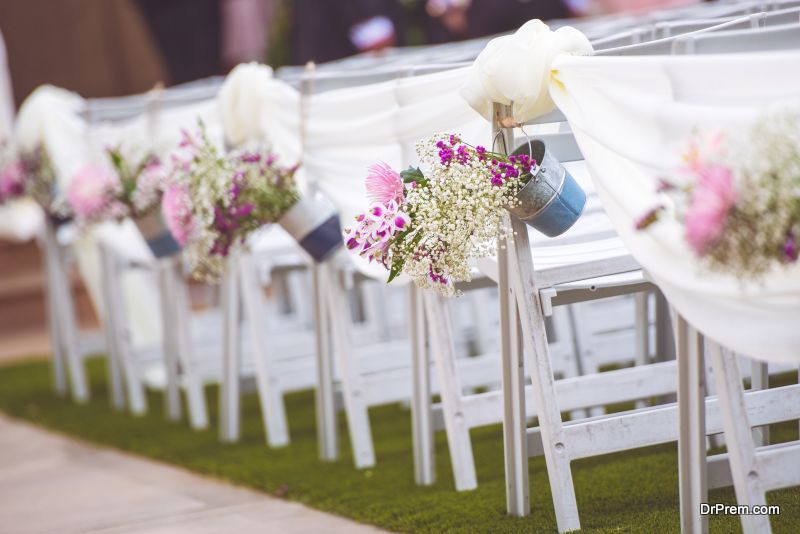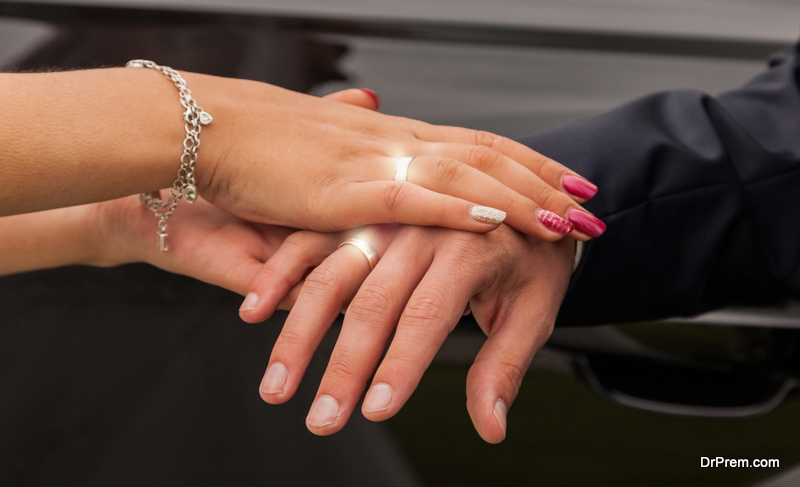When you understand the importance of preserving and protecting the environment around you, it should translate into everything you do – including your wedding. Planning a green wedding isn’t always easy, but it’s well worth it.
1. Find an Eco-Sourced Ring
Wedding planning often begins with the ring, and you should choose eco-sourced materials when buying your ring. For example, you can find a jeweler or dealer who practices socially and environmentally responsible methods of obtaining their rings.
You can also use an antique or vintage engagement ring. These are often handed down from generation to generation, which is accompanied by both extrinsic and intrinsic value. It also means that more energy and resources were not expended to create the ring. It adds something special to your nuptials in more ways than one.
2. Remake an Old Dress
There’s also something special about taking an old dress—perhaps from a mother, grandmother, or aunt—and making it your own. Today’s styles will be infinitely different from when the dress was made, so hire a seamstress to update it. The additional fabric, if any, should be minimal, which allows you to do your part in reducing pollution from clothing factories.
If you don’t have an old dress to reuse, you could borrow or buy a dress from a friend. You might also be able to find an older wedding dress at a thrift store and make it over.
3. Rent Décor Instead of Buying
 There are many advantages to renting décor that go beyond the green factor. Of course, it does reduce your environmental impact because brand new products aren’t being made to accommodate your wedding. But it’s also usually much kinder on the budget—rented supplies can be as much as half the price of supplies purchased brand new.
There are many advantages to renting décor that go beyond the green factor. Of course, it does reduce your environmental impact because brand new products aren’t being made to accommodate your wedding. But it’s also usually much kinder on the budget—rented supplies can be as much as half the price of supplies purchased brand new.
Additionally, unless you’re planning on reusing the products several times for other weddings, you probably won’t ever use the bulk of these items again. They’ll contribute to our growing landfill problem or waste away in a storage unit. Renting prevents both of these major issues.
4. Choose the Right Flowers
Flowers seem like the most environmentally responsible part of your wedding—they come directly from nature, after all. However, many people don’t realize that commercial flower providers often use inorganic practices that are harmful to the environment. They use chemicals to prevent insect infestations, which pollute our soil and can even cause illness to those working on floral farms.
Many florists also don’t commit to sustainable practices, choosing to purchase flowers from farms that are far away. It saves them money, but the transportation has a harsh environmental effect.
Look for locally-sourced blooms that come from ethical farms using organic practices. You should also choose in-season blooms so that the flowers don’t have to be shipped in from a warmer climate. This might mean using deciduous plants rather than flowers, but the effect can still be stunning, and you’ll feel better knowing that you’re doing your part for a cleaner world.
5. Save a Few Trees
Technology has overtaken our world, minimizing the need for paper. Consider sending out virtual invitations rather than printed ones to minimize your reliance on this resource. They can still be expertly designed, but they no longer require the stamp and envelope.
Many people prefer the tradition of receiving invitations in the mail, but even this can be handled more responsibly. Rather than using just any paper, buy recycled paper to print your invitations on and use eco-conscious ink. You can also mail your invitations, but email your save-the-date cards to keep this timebound tradition alive while saving a few trees.
6. Plan Your Menu Accordingly
Just as your flowers are not always eco-friendly, food production can be harsh on the environment as well. You probably already eat organic foods, so why wouldn’t you invite your wedding guests to do so too?
Find a caterer that specializes in earth-friendly foods. They’ll source in-season, locally-grown and organically processed products to guarantee not only the freshest items, but also the least damaging. The same principle can be applied if you’re doing your own cooking.
You might also consider an all-vegan and vegetarian menu. Although guests may be used to their choice of chicken or beef, you can dream up a delectable menu without a harsh environmental impact.
Article Submitted By Community Writer




